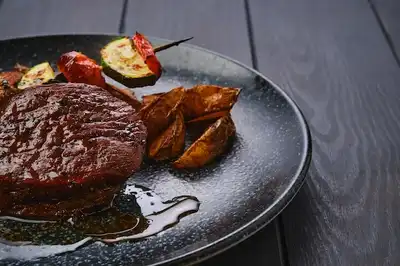How To Bake Bacon – 3 Tips To Make Baking Bacon a Breeze

If you love the salty, meaty, crispy goodness of bacon as much as we do, you probably find yourself craving it frequently. But because frying a batch every time is not exactly practical or healthy, most of us reserve our bacon cravings for only special occasions. That is unless you know how to bake bacon! If your love for this tasty treat is so strong that it can’t be contained by the restrictions of special occasions and dinners, then you must read on to discover how to bake bacon like a pro. Baking instead of frying has a number of benefits, such as less fat, less mess and far less splatter! Here are some tips on how to bake bacon so that it becomes your go-to method whenever the urge strikes.
Crispy and delicious bacon starts with quality bacon.
There are many different types of bacon, and each type has its own flavor and texture. What’s more, each brand of bacon has its own flavor and texture. If you want to bake bacon to its optimal, delicious potential, it’s crucial to use the best-quality bacon you can find. We recommend using thick-cut bacon. Thicker strips of bacon contain less fat than the thinner, standard-issue variety.
Thick-cut bacon also has a higher smoking point, which means it can be baked at a higher temperature without burning or drying out. If you can get your hands on some heritage bacon, you’re in for an absolute treat – heritage bacon is cured using the old-fashioned method, making it so rich and smoky that it’s practically a foodie experience.
Use a rack to ensure the bottom doesn’t get soggy.
Bacon is notorious for getting soggy around the edges. When you bake bacon, this sog-factor is caused by the grease dripping down and collecting at the bottom of the baking sheet. The easiest way to avoid this is to use a cooling rack in your baking tray.
Not only will this keep your bacon from getting all soggy and gross, but it will also allow the excess fat to drip away from your bacon, leaving the crispiest and leanest strips you’ve ever had. You can also put the bacon on a baking sheet, but you’ll need to be extra vigilant about the grease dripping down and collecting at the bottom. If you don’t catch it in time, your bacon will be soggy.
Lower your oven temperature.
Most people bake bacon at 400 degrees Fahrenheit, which is the optimum temperature for frying bacon. When you bake bacon, you’re not actually frying it. You’re roasting it in an oven, which means you have to lower the temperature from frying’s ideal high heat to baking’s low heat.
You should bake bacon at 350 degrees Fahrenheit to achieve the optimum results. A general rule of thumb for baking is to use 10 degrees less than the temperature for frying. So, if you normally fry at 400 degrees, you should bake bacon at 340 degrees.
- A Step by Step Guide On How to Write an Article, Blog Post, or Report
- Top 10 Tips to Recharge Your Mobile Device
- The Best Pancake Recipe for Beginners: Tips to Make Perfect Fluffy Pancakes
Check often, and don’t forget the foil.
Baking bacon is a relatively quick process, but that doesn’t mean you can forget about it entirely. You’ll want to check on it every five minutes or so to ensure that it’s not burning. When your bacon is halfway done, you’ll want to wrap the baking sheet in foil to catch any excess grease that may be dripping down.
This will prevent the grease from burning and leaving your bacon inedible. When it’s done, you should either let your bacon rest for about 10 minutes or put it in a paper towel-lined plate. This will allow your bacon to cool down slowly to prevent it from getting greasy.